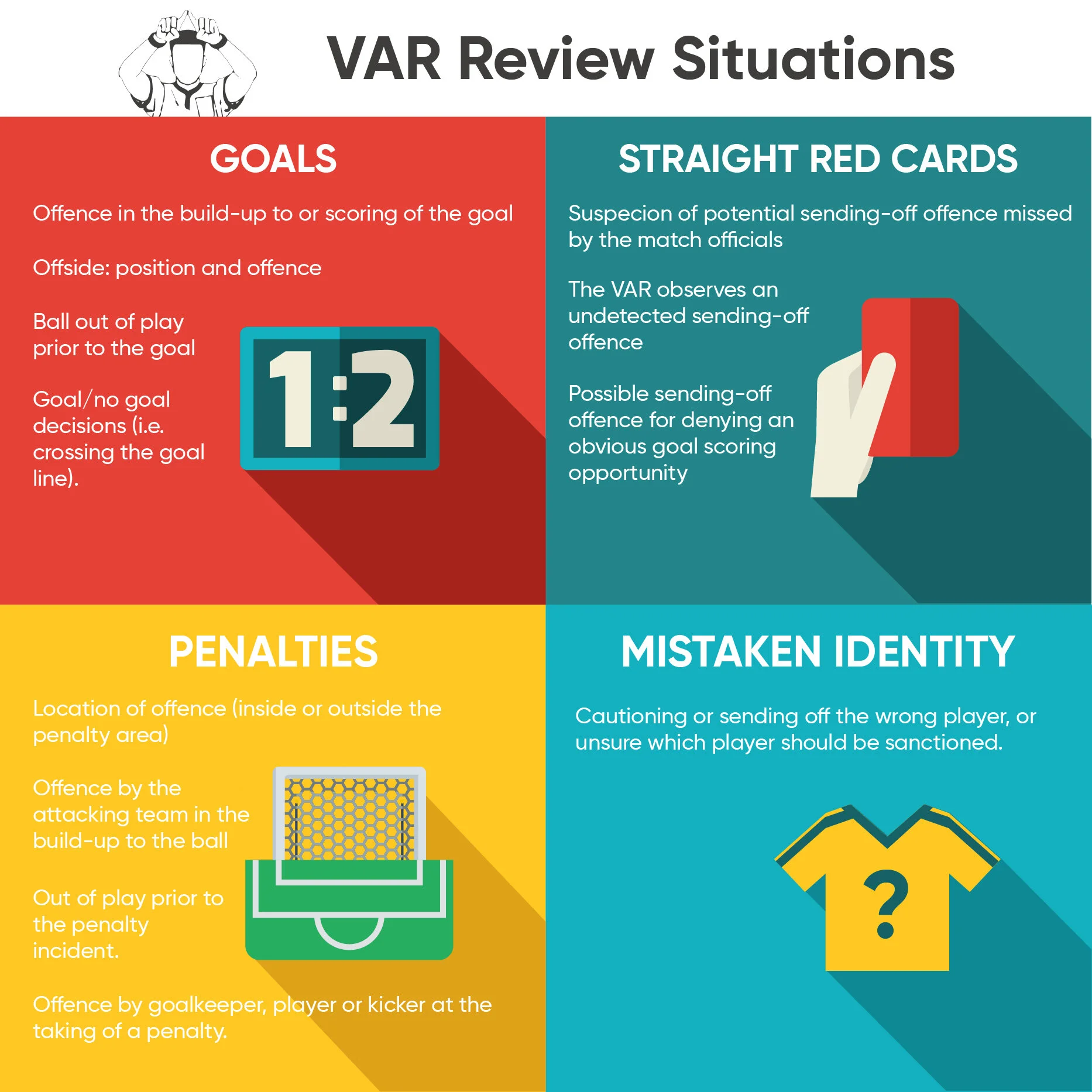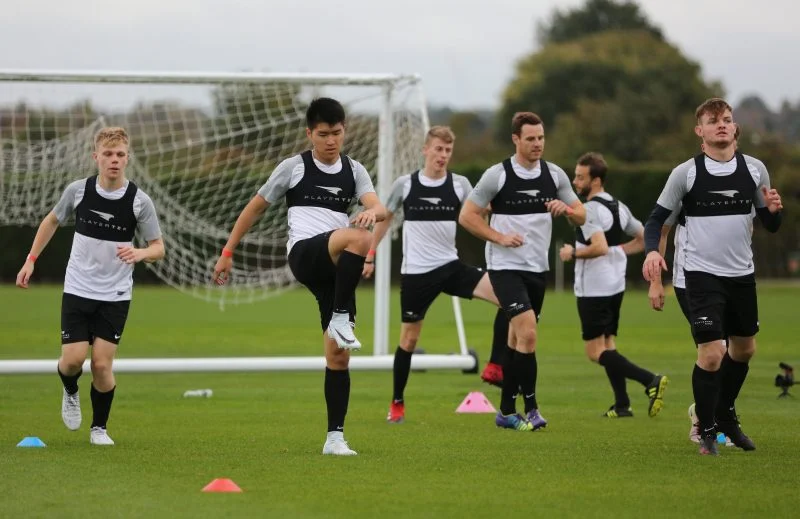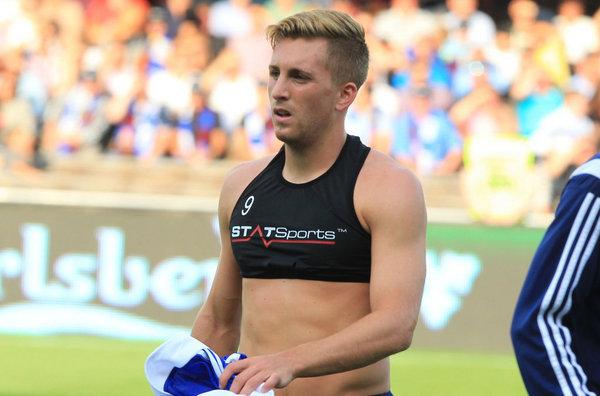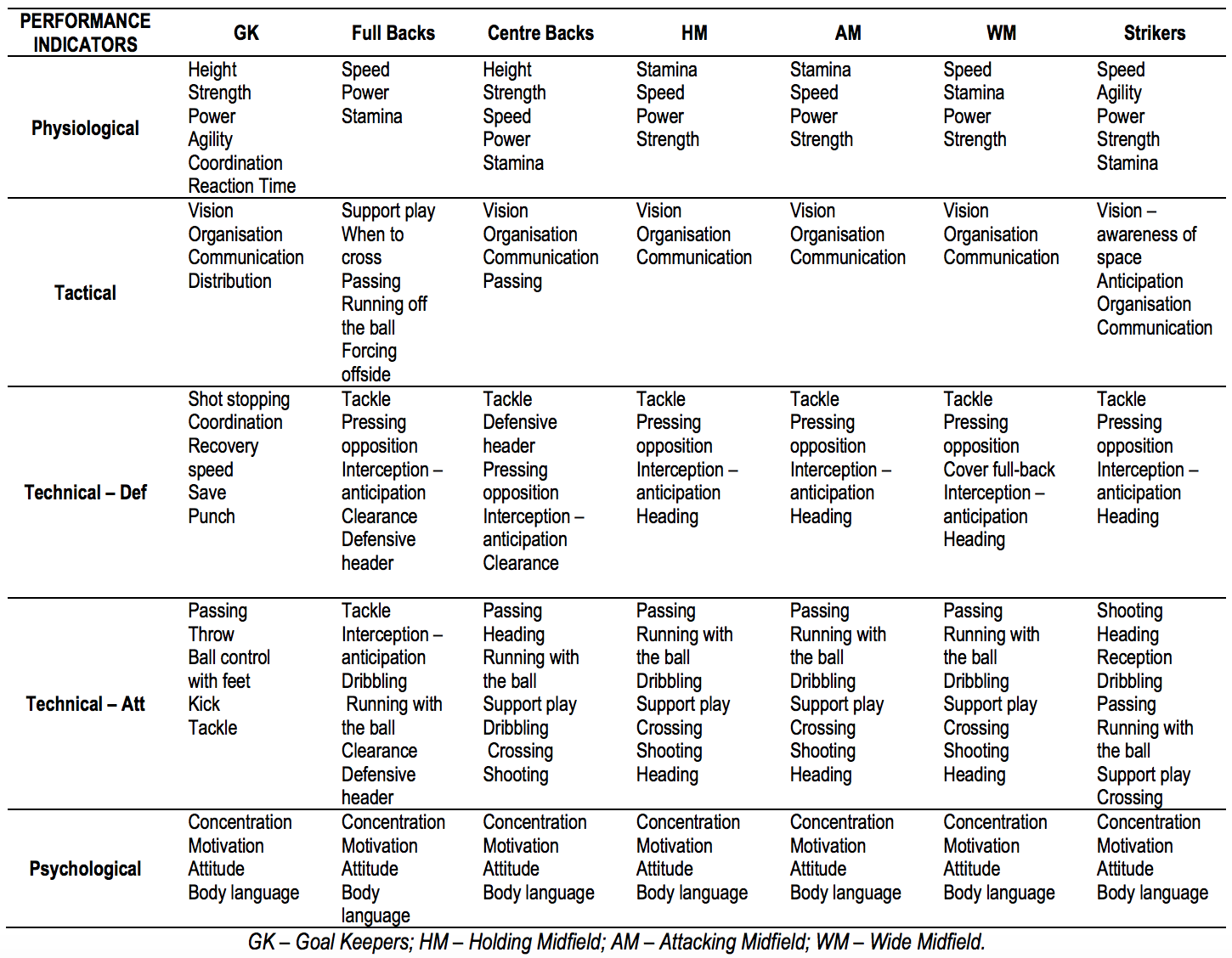A referee in a match of football has full authority to enforce the Laws of the Game, consequently being exposed to controversies when it comes to interpreting a given situation. This risk is evidenced when considering that the referee’s observation can be influenced by various factors:
Position on the field (i.e. being prone to a parallax errors; the deceptive change in the relative position of an object with a change in the position of the observer)
The frequent high ball speeds, particularly during shots on goal, that can reach up to 120km/h, thus make it is challenging for the human vision and other cognitive systems to estimate its position.
Supporting technologies to aid referees’ decision-making and reduce incorrect decisions have been emerging in recent years. Some of these include the use of microchip balls and signals to referee, microphones and earpieces, electronic sensors in goal posts, tracking systems for off-side play, goal-line technology and, most recently, video assistant referee. These type of technological officiating aids aim to enhance the overall quality of the refereeing in the game of football. By having an improved decision making by referees, the integrity of the game is protected and more qualitative content for football fans is produced. Nevertheless, arguments have emerged suggesting that the introduction of delays may have tainted the viewing experience, amongst other controversies.
What is Video Assistant Referee (VAR)?
Hawk-Eye Innovations, owned by Sony, currently holds the patent for the VAR technology and are under a licensing agreements with FIFA to supply access to Hawk-Eye’s technology for top leagues around the world. This additional refereeing process consists on Video Assistant Referees (VAR) watching matches in a video operation room (VOR) assisted by an assistant VAR (AVAR) and replay operator (RO). For all Premier League matches since VAR adoption, this video operation room and all VAR officials have been based in Stockley Park in South West London.
This refereeing system is football's first broad use of video technology to reach more correct decisions. It enables referees a second chance to look at a play before deciding on the appropriate course of action. For instance, it solves the issue of diving in the box to force a penalty and also protects referees from enraged fans and players by giving them more credit, more authority, fewer mistakes and overall more robust justification when taking action against them.
Inside the VOR, VAR has access and control of TV broadcast footage and is connected to the communication system used by match officials, with either the VAR or the AVAR advising the referee if the game needs to be reviewed. VAR is also in charge of selecting the best angle and replay speed during reviews. In theory, it should only get involved when officials have made a 'clear and obvious error' in one of four key areas; goals, penalties, red cards and mistaken identity. This philosophy of “minimum interference with maximum benefit” promoted by the International Football Association Board (IFAB) in their VAR protocol hopes that the introduction of VAR won't disrupt the flow of the game.
Additional to the video operating room, the referee is able to further review a given play by entering the Referee Review Area (RRA) on the pitch side, an ‘on-field review’ (OFR) can be undertaken.
This RRA must be:
in a visible location outside the field of play
clearly marked
This area is exclusive to the referee. A player, substitute or substituted player who enters the RRA is cautioned and any team official who enters the RRA is publicly given an official warning or also cautioned with a yellow card.
Other official criteria when using VAR includes:
VAR reviews are not to be used for first or second yellow cards.
The referee must always make a decision prior to the use of VAR.
Final decision is always taken by the referee.
No time limit: accuracy is more important than speed.
Players and team officials must not surround the referee.
Referee must remain visible during review.
If play continues after a reviewed incident, any disciplinary action taken during the post-incident period is not cancelled.
If play has stopped and been restarted, the referee may not use VAR.
Coaches or players cannot request a review.
The VAR review process follows three main steps: incident, review/advice and decision. In a match situation, it would look something like the following:
The Video Assistant Referees review the video footage of an incident or referee requests review. However, only the referee can initiate a formal review where play is stopped.
The Video Assistant Referees advises the on-field referee through an earpiece.
The referee puts his hand up to stop play if required.
The referee informs the players that a decision is being reviewed.
If VAR information is accepted, referee reverts decision by drawing a rectangle with their arms.
When decisions are not obvious or subjective, the referee will watch a replay on a pitch-side screen (avoided whenever possible to prevent long delays).
Referee decides to maintain or reverse the original decision.
On top of the general IFAB guidelines for the use of VAR, the Premier League also implemented variations with their own specific criteria. Some of these include:
Referees avoid on-pitch reviews at the pitch-side screen and instead have been told to trust the advice by VAR.
Stick to a higher threshold and only intervene when 'clear and obvious' errors.
Follow a softer interpretation of the handball rule when not a deliberate act of extending the arm away from the body, as oppose to IFAB’s laws that state penalties should be given if the hand or arm extends beyond the natural silhouette of the body, regardless of intent.
Disallow any goal in which the ball strikes the hand of an attacking player in the build-up, deliberate or otherwise.
Impact Of VAR To Modern Football
In raw statistical terms, Lago-Peña et al. (2019) found that there was a significant decrease in the number of offsides, fouls and yellow cards after the implementation of the VAR in both the Bundesliga and Serie A. This may possibly be due to a less aggressive behaviour by players due to additional officiating, as players become more careful with committing fouls, tackles and protesting. The study also found an increase in the number of minutes added to the playing time in the first half. Moreover, the number of goals and number of fouls decreased in Serie A, as so did offsides in Bundesliga and yellow cards in both competitions.
Caruso et al. (2016) also discovered that slow motion video review can distort reality and can change the way body movements and intentions are perceived. Splitz et al. (2018) asked 88 elite referees to evaluate 60 different foul play situations taken from international matches, replayed in either real time or slow motion. They found that decisional accuracy was similar in slow motion and real time, as faster speeds more closely replicate the cognitive processing demands required in dynamic and time-constrained environments. However, in situations like offside decisions slow motion might be of added value to assistant referees as they require evaluation of spatial and temporal landmarks. They also found that referees penalized situations more severely in slow motion compared to real time as viewing a situation in slow motion, compared with regular speed increases the perceived intent of a violent action. This meant that video replay speed has an important impact on the disciplinary decision given by the referee.
Moreover, adjustments to the way the rules are enforced also have behavioural influences on players and coaches. Pauses during video review allow coaches to relay information to players in a more cohesive manner. It provides them an opportunity to have an immediate input in the game, particularly during high stake scenarios. They are able to reach players directly, rather than through a captain or teammate, thoroughly explain their tactical changes and checking for understanding. This ultimately improves communication between players and coaching staff. The increased number of opportunities to introduce additional tactical inputs by coaches during VAR officiated matches enhances the importance on coaching decisions by each team at critical intervals of the match. In other words, coaches are now more capable of closely managing their players.
Attacking players may also see their game dynamics affected. Referees are now more likely to let play continue if there is a close offside decision and that could be checked later through VAR. This new scenario increases attackers’ incentive to make early runs on high defensive lines to push the limits of close offside margins. They are more likely to seek scoring opportunities as incorrect offside calls that stop attacking plays become less frequent. Ultimately, the returns on risking an offside call during attacking play, particularly when passing through defensive lines, become substantially higher.
Another study by Anik, L. (2018) evaluated how VAR influences the observers’ perceptions on quality, flow, outcome and enjoyment of matches, as well as the perception on referees’ performance, credibility and authority. She found that a referee who made the correct call without using VAR was considered more competent. On the other side, the referee’s reputation was negatively impacted when using VAR, even in ambiguous situations where he made the correct decision by overturning the original call. During these debatable situations, a referee was perceived as less competent when choosing to benefit from video technology. A referee’s use of VAR may be only beneficial to him when he confirms the decision he has already made on the field.
Controversy
A number of fans and pundits have argued that VAR disrupts the flow of the game. Even though IFAB encourages a “minimum interference for maximum impact” use of VAR, a general dissatisfaction exists amongst fans with the current amount of time taken to review incidents. In comparison, Rugby Union’s TMO and cricket’s DRS have proven very quick, efficient methods of reviewing play with confusion created. The perception with football, however, is that VAR has a long way to go to become as established as similar systems in other team sports.
Additionally, spectators are not always aware of when a decision is being reviewed, particularly in grounds that don't have big screens but with a loud speaker announcement. Transparency of the referee’s decision process is currently inexistent, as conversations between VAR and match officials are not broadcasted to the public, unlike video arbitrage in other sports such as Rugby Union. Gary Lineker has referred to this point in various occasions, as seen in the below interview with Danny Baker.
Another area of concern in the use of technology for refereeing is the strict and subjective nature of football's laws. For instance, goals can be disallowed for the tiniest of margins and many incidents are left open to interpretation. Despite the availability of replays, debates and disagreements about penalty and other incidents still remain. Human interpretation is still a major factor in decision making. Suggestions have emerged about now being a good time to look at the laws of the game, such as the offside rule bring redrafted to try and avoid goals being disallowed over matters of inches, claiming that microscopic analysis of offsides goes against the original spirit of the law.
Concerns about this spirit of the game are also raised regarding goal celebrations. Fans and pundits have addressed the issue that VAR reviews during goals are taking the joy out of the game because nobody can celebrate properly until VAR review is completed. This spontaneous joy of goal celebrations being lost due to the possibility of a review could become detrimental to the atmosphere in stadiums.
Other have also suggested that the lack of debate it causes amongst fans can also affect the nature of the sport’s fanbase, arguing that fans would rather a free flowing game over a perfectly refereed match where they sit in silence. This brings in the perspective of addressing the game of football as an entertainment rather than purely a sporting machine.
Lastly, in developing countries, the high cost of using the system, such as licensing fees, may restrict access to VAR technology for many leagues and divisions, thus widening the gap with more established, wealthy leagues. In Brasil, VAR was rejected due to the estimated cost per season of $6.2 million. South American and African leagues will face financial challenges adopting these new IP-protected technologies.
Citations:
Anik, L. (2018) How Soccer’s Video Assistant Referee (VAR) Influences Belief in Human Referees’ Competence. Behavioural Scientist. Link.
Caruso, E. M.; Burns, Z. C. & Converse, B. A. (2016). Slow motion increases perceived intent. Proceedings of the National Academy of Sciences of the United States of America, 113(33), 9250–9255 https://doi.org/10.1073/pnas. 1603865113
IFAB (2017) Video Assistant Referees (VARs) Implementation handbook for competitions. The International Football Association Board, Zurich Switzerland. Link.
Lago-Peñas C.; Rey E. & Kalén A. (2019) How does Video Assistant Referee (VAR) modify the game in elite soccer?, International Journal of Performance Analysis in Sport, 19(4), 646-653, DOI: 10.1080/24748668.2019.1646521
Lakpini, C. (2019) The Video Assistant Referee (VAR): The Patent-Protected Technology Changing the Face of Football, IP Unit, University Of Cape Town, Intellectual Property Unit. Link.
Spitz, J.; Moors, P.; Wagemans, J. & Helsen, W.F. (2018). The impact of video speed on the decision-making process of sports officials. Cognitive Research: Principles and Implications, 3(16), 1-10. https://doi.org/10.1186/s41235-018-0105-8






















